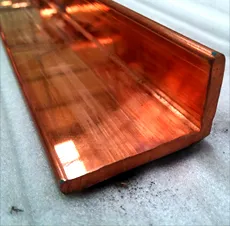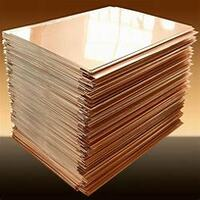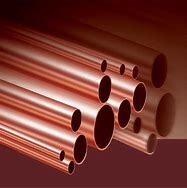1. Introduction
In the past 48 hours, global copper prices have surged due to supply chain disruptions in Chile and increased demand from renewable energy projects, according to a report by Metal Bulletin. This spike has renewed interest in copper-based products—from rods and strips to pipes—across construction, electrical, and recycling sectors.

Whether you’re an electrician installing an earthing system, a welder joining copper components, or a recycler stripping wire for scrap, understanding the variety and function of copper rod and related forms is essential. This guide breaks down everything you need to know about copper rods, strips, bars, and pipes—all in plain English.
2. What Is a Copper Rod?
A copper rod is a solid, cylindrical piece of high-conductivity copper, typically used as a raw material for drawing wire, making electrical components, or serving as a grounding electrode. Also referred to as rod copper or copper round bar, it comes in various diameters and purity grades.
Common applications include:
- Electrical conductors
- Grounding systems (as copper earth rod or ground rod copper)
- Feedstock for manufacturing copper wire and tubing
- Brazing and welding filler material (e.g., copper brazing rod or copper welding rod)
3. Copper Rods for Earthing and Grounding
One of the most critical safety uses of copper rods is in earthing systems. A copper earth rod—often made from solid copper, copper bonded steel, or copper clad steel—is driven into the ground to safely dissipate electrical faults.
Key variants include:
- Solid copper earth rod: highly corrosion-resistant but expensive
- Copper bonded earthing rod: steel core with thick copper layer, balancing cost and performance
- Copper clad ground rod: thinner copper layer over steel, suitable for less corrosive soils
When comparing earthing rod price, copper bonded options offer the best value for most residential and commercial installations. Always check local codes—some regions require a minimum copper thickness or specific dimensions like a copper earth strip 25x3mm.
4. Copper Rods in Welding and Brazing

For joining copper parts, specialized filler rods are essential. Copper to copper brazing rods and copper to copper welding rod types ensure strong, conductive joints without compromising integrity.
Popular choices include:
- Phosphorus-deoxidized copper rods for copper rod welding
- Silver-bearing copper brazing rods for high-strength applications
Note: Standard welding rod copper isn’t always suitable—always match the rod alloy to your base metal. Using the wrong type can lead to weak joints or oxidation.
5. Copper Strips and Flat Forms
Beyond rods, flat copper products like copper strip, flat copper strip, and copper metal strips serve vital roles in busbars, grounding straps, and electronics.
Common types:
- Thin copper strips (e.g., 1mm copper strip) for circuitry
- Beryllium copper strip or copper beryllium strip for spring contacts
- Nickel plated copper strip for enhanced corrosion resistance
- Copper strip roll or roll of copper strip for continuous applications
You’ll also find niche uses like copper tape for snails (a gardening deterrent) or copper edging strip for roofing. For electrical grounding, copper strip for earthing is widely used as an alternative to rods in some installations.
If you’re sourcing locally, search for ‘copper strip near me’—many hardware and electrical suppliers stock standard sizes. Prices vary, so compare copper strip price across vendors, especially for bulk orders like a copper strip roll.

6. Stripping Copper Wire: Tips and Warnings
Recyclers often ask: what’s the best way to strip copper wire? Whether you’re stripping copper wire for scrap or preparing cable for reuse, avoid burning copper wire for scrap—it releases toxic fumes and degrades copper quality.
Safe, effective methods include:
- Manual wire strippers for small jobs
- Automatic wire stripping machines for volume
- The fast way to strip copper wire: use a dedicated stripper that removes insulation without nicking the conductor
Always prioritize safety and legality. Stripping wire for recycling is worthwhile only if done cleanly—contaminated copper fetches lower prices.
7. Copper Pipes and Tubing in HVAC and Plumbing
While not rods, copper pipes are closely related in composition and application. Air conditioning copper pipe (also called aircon copper tube or ac copper pipe) is essential in HVAC systems due to its thermal conductivity and durability.
Common sizes include 15mm copper pipe, 22mm copper tube, and 3/4 copper tubing. Proper copper pipe soldering ensures leak-free joints, and fittings like copper pipe connectors must match the pipe type (e.g., Type L vs. Type M).
For DIYers: bending copper pipe requires care to avoid kinks, and cleaning copper pipe before soldering is non-negotiable for strong joints.
8. Copper Bars and Ingots
Larger conductive components use copper bar, copper flat bar, or flexible copper bus bar designs. These are crucial in switchgear, transformers, and power distribution.
Copper ingot is the raw form used to produce rods, bars, and strips. If you’re considering melting scrap into bars, check the 1oz copper price first—processing costs may outweigh returns unless done at scale.
Flexible copper bar variants are gaining popularity in renewable energy installations where vibration resistance matters.
9. Conclusion
From copper rod for welding to copper clad earth rod for grounding, copper’s versatility makes it indispensable across industries. With rising demand and fluctuating copper rod price trends, understanding product types, proper handling, and market options is more valuable than ever. Whether you’re installing, fabricating, or recycling, choosing the right copper form ensures performance, safety, and cost-efficiency.
Our Website founded on October 17, 2012, is a high-tech enterprise committed to the research and development, production, processing, sales and technical services of ceramic relative materials such as Copper. Our products includes but not limited to Boron Carbide Ceramic Products, Boron Nitride Ceramic Products, Silicon Carbide Ceramic Products, Silicon Nitride Ceramic Products, Zirconium Dioxide Ceramic Products, etc. If you are interested, please feel free to contact us.

